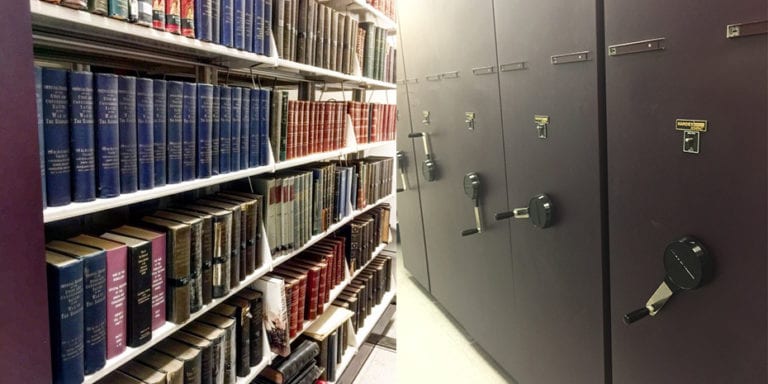
When I was a very young kid, my parents had a subscription to Life magazine. It would come in the snail mail once a week. Thursday, if memory serves. When I got home from school on that afternoon, I’d rush to the mail slot at the front door and take the magazine to our “music room” and lay down prone on the carpet to read what in the world happened over the past 7 days. It was a tall magazine—about 13.5 inches in its heyday. It was full of pictures—mostly black and white—shot by great photo journalists all over the world. Some were serious, some frivolous, tragic, historic, funny. It was sort of the Instagram of the mid-20th century. The final page always had a full page gag photo “Miscellany.” I would often “cheat” and go there first. The experience entertained and informed and provided a “slice of life” for the preceding week. I learned a lot about life, current events, war, peace, society…every week from Life.
I don’t recall when the family stopped getting Life. Maybe I stopped paying attention, getting more interested in other ways of obtaining information.
Flash forward many years, and I began selling Life in the bookstore. Folks would bring boxes stacked with Life in the trunks of their cars, and I would buy the lot and resell them one at a time. They were very popular. The World War II years commanded a premium. If the cover featured someone famous and iconic like Marilyn Monroe or Winston Churchill, the price would go up. The first few years of Life (1936-1940) would always be more valuable as well. Margaret Bourke-White shot the cover photo of the very first issue “November 23, 1936,” and I believe I could easily ask $100 for a copy in great condition. Unfortunately, people liked to read and rummage through the magazines in the store, and mishandling damaged many rendering them unsalable.
We still sell them online via WonderBook.com. They sell “okay.” Usually for a just a few dollars per issue. If a copy isn’t perfect, we won’t list it at all. Those likely go on the sidewalk tables at 95¢ each at our brick-and-mortar stores.
Flash forward to February 2016, and a librarian with the Gettysburg library reached out to me via email. I had bought some great books from her personal collection. She reminded me that two years earlier, she had mentioned the library was deaccessioning some of their old, duplicate, obsolete, and seldom used books. She wrote that there were about 45 3-foot shelves of mostly very old books but also many linear feet of bound Life magazines and National Geographic. Some images of the shelving were included. I saw some great leather sets and vintage cloth. Intriguing.
“Would Wonder Book be interested?”
“Sure!”
I was put in touch with her supervisor, and we tried to schedule a visit. But as things often happen, she was unavailable when I was free and vice versa. Eventually, the communication ball got dropped either here or there.
Flash forward to June 2017! And the project that had been lost in an inbox got restarted. Then I dropped the ball. The summer became a madhouse of incoming books and projects, and I failed to follow up.
Flash forward to earlier this month—the Gettysburg library acquisition was now nearly 20 months on—in some ways 44 months! I got a reminder email. Oops. A deal is a deal, and a promise a promise. I offered to come up myself on the next Saturday, and take them all away.
I snagged a volunteer, Caryn Code, to work on a Saturday, and off we went. It was a beautiful, cool, clear, late summer/early fall day. The trip from Frederick, MD to Gettysburg, PA along the US 15 along the Catoctin Mountain range is beautiful and historic. It passes the National Pike (one of the first wagon trails west through the Cumberland Gap), Camp David, the Furnaces, Mount St. Mary’s Saint Elizabeth Ann Seton and Grotto of Lourdes Shrines, the Mason-Dixon Line, President Eisenhower’s farm, and some beautiful farms and estates. And then of course, there are the Civil War battlefields and beautiful historic town of Gettysburg itself. The old stone library near the square in Gettysburg is a classic building.
We pulled the van behind the building and backed into the loading dock area. Hundreds of boxes accumulating for their next book sale were stacked around the storage area. We were led up seven stairs and through a door to a room with a bank of burgundy, metal, automated bookcases. These high tech devices are on tracks, and with a gentle turn of a crank, they roll left or right moving a whole “wall” of shelved books to reveal one row while closing off another. The Head Librarian turned the big chrome crank, and a wall of mostly very old books appeared. Two walls actually, as books were stocked on both sides of the newly created aisle. Some were simply beautiful. Others were worn and had the dreaded library markings on the spine, which while necessary for libraries to shelve their books in the proper places and keep track of them, hurts their resale value because collectors consider the markings defacements.
“The periodicals are in this row.”
The Head Librarian cranked one row away and then another and then another. A wall of Life appeared. I stepped into this new aisle and studied them. It began with Volume 1 Number 1 from November 1936 and continued year after year after year in rather plain, burgundy, buckram, library utility bindings. But the set was beautiful and imposing in its size and uniformity and “plainness.”
I exited and turned one crank and another and another to expose the older books I’d first seen. There were a LOT of books on the Civil War and Pennsylvania history. I perused each of the over 40 3-foot shelves looking for titles that would merit special attention and separate packing. There was nice run of genealogical titles. Unfortunately, even though some of these can sell for decent money—the audience for many titles is very, very small. (For example, how many folks in the whole world would want to look at Records of the Lutheran Congregation at Old Goshenhoppen, Upper Salford Township, Montgomery County, PA. 1751-1937? Bless the World Wide Web with its millions of eyes searching for unusual items in their fields.) Making the arcane even more problematic was that they all were heavily taped and marked—necessary for library use of paperbound books—but requires their online descriptions to be “Poor” (or “Acceptable on Amazon.) Still I packed and loaded these separately for fast tracking to WonderBook.com.
There was an 18th century folio volume about William Penn—very thick—in a nice tight leather binding.
Three battered leather volumes caught my eye. The spines were shot and boards loose, but something drew me to look inside: The Laws of the United States, 1795-96. That’s pretty early in the history of the US. Even though they were odd volumes, I suspected they could be “something” despite their dreadful state. To repair them nicely would cost a couple hundred dollars each.
“Hmm…good AND bad.”
I packed those and another couple boxes of titles that merited closer scrutiny. I didn’t want them lost in the masses. That left the rest of the two movable “walls” of old, often crumbly, books to pack and load. Caryn and I dove into it. We took turns rolling the hand cart with five Bankers Boxes to the steps and carrying them down one at a time and out to the van. It’s good to mix the grunt work of packing with even more grunty work of toting and loading. I got to know those steps intimately, and diverted myself by counting, “1, 2, 3, 4, 5, 6, 7,” each time up and down.
As I packed, toted, and lifted, my mind could wander, and I pondered how tastes and book sales had changed.
The Civil War and regional history…those subjects were, at one time, gold. ANY title was a sure sale, and always at decent money. The Civil War sections at our stores kept growing until they were by far the largest history sections. Books on state and local history, I could not keep stocked. Even common Civil War titles sold readily. People couldn’t get enough of Bruce Catton and Earl Schenck Miers and Shelby Foote. How hungry were book collectors for Civil War? Here’s a junk book club edition of A Stillness at Appolattox I recently ran across in a random buy. Someone paid $15 for it maybe 25 years ago years. There’s the receipt still in the book. Today this book would go on our dollar tables—at best. We get twenty copies for every one we can retail.
We have always been in a great geographical region for Civil War buffs. Harpers Ferry, Antietam as well as Gettysburg are all about 30 minutes from Frederick.
When the Ken Burns’ The Civil War miniseries aired and the movie Gettysburg opened (BTW—that was shot near Hagerstown, and many of the actors shopped at that store during breaks in filming.) customers could not get enough of Civil War history and fiction.
Then in the early 2000s, I noticed Civil War piling up on the floors in front the bookcases in those sections. More was coming in than going out.
Why? I dunno. The Internet may have done something to supply and demand. Also, there had been a huge boom in small press histories written by local scholars on the most arcane, Civil War events and equipment and stories and… New titles appeared every week or so. Did the market become saturated? Or was it an age thing? Had the audience grown old, and were now selling their collections rather than building them? But that didn’t make sense. There’s not much difference between 1860-1985 and 1860-2003.
“Why, there’s a set of Grant’s Memoirs,” I chuckled to myself as I packed the 2 volume, dark green set. It had been a huge bestseller in 1885. It would sell within days when we’d acquire a set in the 1980s and 1990s. Every few years back then, a very excited seller would come find me at Wonder Book, “This is signed by Ulysses S. Grant!” WRONG on one hand—the “autograph” is a PRINTED facsimile. IMPOSSIBLE on the other hand. Grant had died of cancer before the book went to print. That story even made some of the newspapers in region now and again over the years, “Local Antique Dealer Discovers Signed U.S. GRANT Volumes.”
“Oops!”
The market shift also happened with books about regional and local history. Books about Frederick County like I Drove Mules on the C&O Canal that would sell within days of my acquiring them in the 1980s and 1990s began to multiply in the “collectible” glass cases. The huge, 1910, 2 volume History of Frederick County that wealthy farmers would ego bid through the roof at country auctions also started to multiply in the locked glass cases. Before it would have sold for hundreds of dollars with just a phone call to someone on the waiting list on my Rolodex. But that waiting list is gone now.
Here I was acquiring nearly 200 linear feet of books that no longer sell well.
And the wall of Life? It just screamed white elephant (or is it burgundy elephant?) as it stared down at me. It dwarfed this humble bookseller kneeling on the floor packing. The bound magazines are so big and thick that only four fit into a Bankers Box. The glossy paper is so heavy that each volume weighs about 15 pounds. What will we do with them? The contents are lovely. But who would want the whole set? Maybe we can try to market them by birth years?
I dunno. We will try to figure something out.
I went back a week and a half later with the longtime warehouse manager to pick up what was left of Life. It was another beautiful, crisp, late September day up US 15 along the still green, mountain range that will soon become a spectacular palette of reds, yellows, and oranges.
We packed and loaded the last of Life and a long run of bound National Geographic. The library now had two rows of empty shelves when we were done. Fresh space for new and more viable material for the public to use.
We headed back south through history and beauty. You can’t help but draw a deep breath when you drive through the killing fields just south of Gettysburg. 50,000 casualties—many in those fields. If you’ve never read Killer Angels—well, I can’t recommend it enough. It is not just great historical fiction but IMHO one of the greatest novels ever written.
We stopped at the Catoctin Orchard and got some apples and peaches and peach pie for the warehouse managers and staff. (Why didn’t I get some pumpkins? Guess I’ll HAVE to go back.)
Despite all gloom and doom some years ago about new technologies making all print books obsolete, I see no horizon for the printed and bound book. They are so user friendly for human hands and eyes and comfort. All sizes, shapes, thicknesses. Illustrations. Different textures of paper. Fellow booksellers and other prognosticators in the late 2000s were sure the Kindle and its kin would quickly kill the market for print books. You could carry almost every book in the world in a little, plastic slab. I never doubted human nature and its interrelationship with “real” books. Now, 10 years on, the eBook has its place, but it seems to have leveled off at about 1/3 of market. Humans still prefer to hold physical books and turn paper pages.
And libraries? The gloom and doom as to what their function and purpose would be as a result of the new technology was also wrong. They are living, vibrant organizations and filled with skilled and helpful people who can guide you places Google can’t. I DO recall there were a few, foolish, college libraries that dumped all their books and replaced them with PCs…
Another “Oops!”
The four walls of books we picked up? Throughout history, libraries have needed to cull and prune. Sometimes tough decisions. Sometimes easy. New books are being released every day. Some books wear out from use. Somehow you acquire duplicates. Shelves are never infinite. Even at Wonder Book’s warehouse with miles of shelves holding 2 million books, we need to make space for fresh arrivals.
What will we do with Life and the Civil War and regional history? I know some will go online. Some will go to the stores. Some that are attractive but obsolete, we will find new homes for as designer books for our Books By the Foot service.
BooksByTheFoot.com…that will be a future blog. But, believe me, we are book lovers here. If we can get a book to a reader or collector, that is the first choice for every book we handle. If we can’t—we try to find users that appreciate the decorative qualities of books. Books By the Foot evolved from the desire to keep as many books as real, readable books. The books we send to Books By the Foot would otherwise have unhappy endings (a.k.a. the “farm” or pulp mill for recycling.)
#BooksAreBeautiful
That monolith of Life? What will we do with it? I’m not sure yet. I’m working on a happy solution. Until we come up with one, we will keep the run safe and together here.
Hey! Do you have about 50 feet of empty shelves at home? You could have a “Lifetime” supply of great living history… Send me an email.
#BookRescue

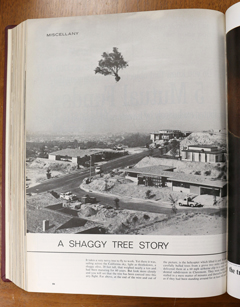
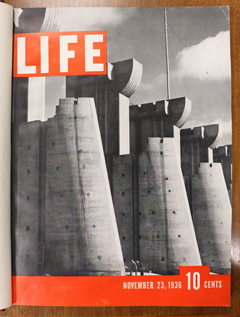
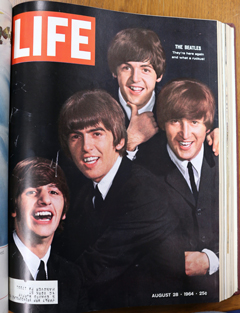
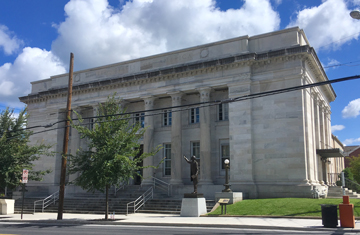
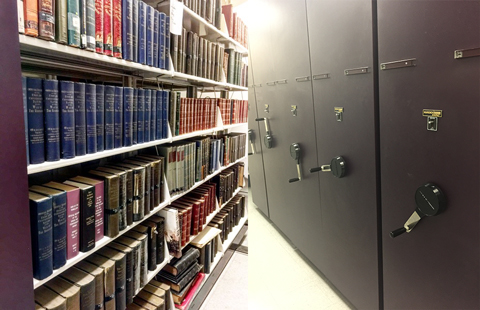
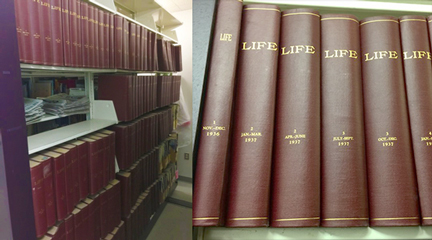

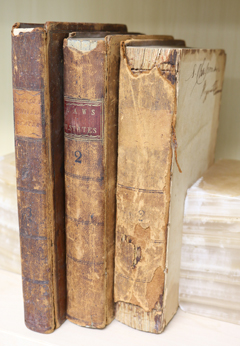
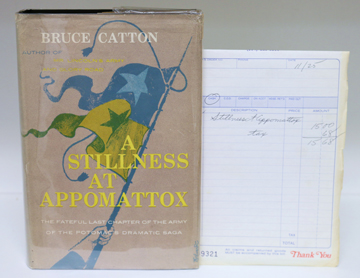
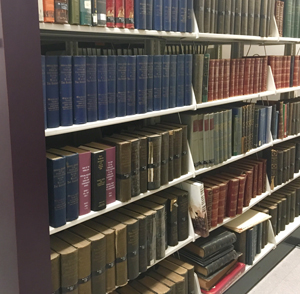
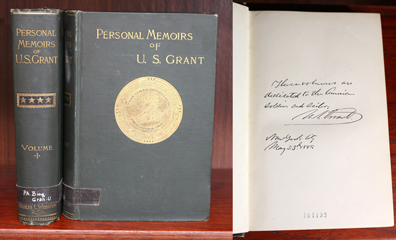
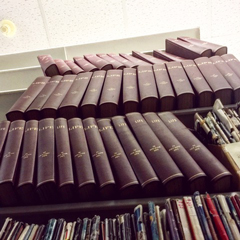


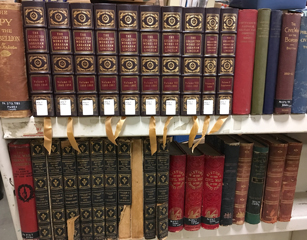
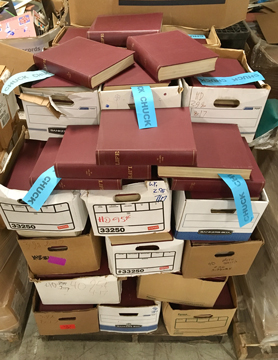
There are no comments to display.